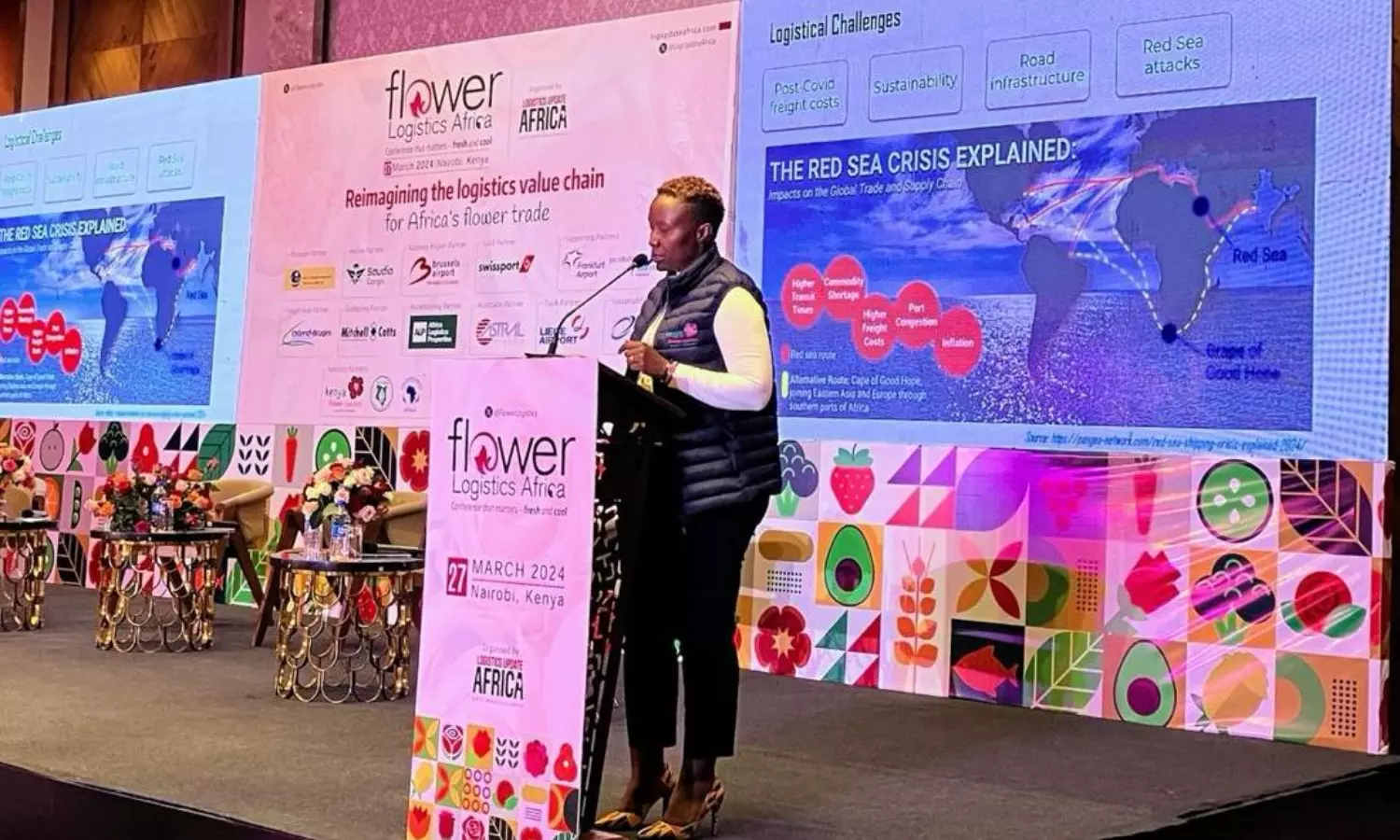FLA 2024 Insights: The state of Kenya’s floriculture industry
Kenya's floriculture faces challenges like the Red Sea Crisis and shifting from air to sea freight.

Located on the equator, Kenya’s weather offers an optimal opportunity for the floriculture industry. The industry is vital to the country’s economy, contributing significantly to its GDP. In fact, 40% of all roses sold in the European Union are sourced from Kenya. The floriculture sector is also the country’s top foreign exchange earner, making it a cornerstone of international trade. Moreover, Kenyan flowers are sold across 60 destinations.
The Kenya Flower Council (KFC), established in 1996, represents more than 80% of the country’s flower growers and exporters and has been instrumental in promoting the interests of this dynamic industry. At a recent keynote address at the Flower Logistics Africa conference, organised by Logistics Update Africa, KFC’s Membership, Advocacy, and Communications Manager - Lina Jamwa, shed light on the challenges and opportunities facing Kenya’s floriculture industry.
During her keynote address, Jamwa underscored the industry’s resilience and pivotal role in global flower supply chains. She highlighted, “Kenya’s floriculture contributes 1% of the national GDP, with competitors looming from Latin America.”
Challenges in Kenya’s floriculture sector
Despite its robust performance, the industry faces multifaceted challenges, ranging from legislative hurdles to logistical complexities. Jamwa outlined the challenges succinctly, stating, “Major hurdles include legislation challenges like tariffs and trade barriers; compliance and regulation issues like SPS (sanitary and phytosanitary), EU standards, EU plant health regulations; sustainability challenges like GAP (Good Agricultural Practices) and social, governance; climate change challenges like GHG (greenhouse gases), carbon footprint; logistical challenges like high freight costs and attacks on shipping vessels in the Red Sea area by Houthi rebels; and cold chain management challenges like packaging, post-harvest losses.”
The Red Sea crisis
One of the most pressing logistical challenges is the recent Red Sea crisis, which has compelled growers and exporters to seek alternative shipping routes such as the Cape of Good Hope. According to a study, the Red Sea shipping crisis, which Yemen-based Houthi rebels triggered in response to the ongoing armed conflict between Israel and Hamas-led Palestinian militant groups, poses significant challenges to global trade and supply chains. Vessels are being rerouted to avoid attacks, which increases transit times by 30% and leads to shortages of essential commodities including wheat and aluminium. Ocean freight costs have surged by 250%, burdening shippers, while port congestion only adds to logistical obstacles.
The Red Sea, positioned south of Suez Canal, is an essential channel for global trade and container traffic, accounting for about 12% of the world's trade and 30% of container traffic. The countries bordering the Red Sea are Yemen, Saudi Arabia, Egypt, Sudan, Eritrea, and Djibouti. The Suez Canal, a man-made waterway in Egypt, is the shortest route from Asia to Europe, reducing fuel consumption and transit times for shipping companies.
This shift has led to higher transit times, commodity shortages, increased freight costs, port congestion, and inflation. Fuel prices have soared, adding pressure on inflation and rising costs across different industries.
Navigating these challenges requires strategic planning and close collaboration with logistics providers. Despite the complexities, taking proactive measures can help mitigate disruptions and protect the integrity of the supply chain.
As Jamwa pointed out, the Red Sea crisis has forced Kenyan exporters to switch from sea to air heavily, driving up their logistical expenses. “The Red Sea crisis has presented unprecedented challenges for our industry, necessitating swift adaptation and innovative solutions,” stated Jamwa, addressing the impact of geopolitical disruptions on logistics.
New initiatives to tackle new challenges
The Port of Mombasa is taking innovative steps to address its challenges regarding efficiency and sustainability. These solutions include adding 500 new wagons, including 20 chilled wagons, enabling 100% automated documentation, and eliminating paper usage. As part of their sustainability efforts, they aim to shift 50% of annual flower export from air to sea by 2030. Sea freight offers 80% fewer CO2 emissions than air freight.
The port is part of the EU-funded Business Environment and Export Enhancement Program’s (BEEP) programme funding initiatives on sea freight. It focuses on creating a sustainable export ecosystem to reduce exports’ carbon footprint. The value chain they are concentrated on includes mangos, avocados, vegetables, and cut flowers.
During the keynote, Jamwa mentioned that Kenya’s floriculture sector is shifting strategically towards sea freight, focusing on improving logistics infrastructure and maintaining sustainability. She further emphasised, “We envision a future where we can significantly increase exports via sea freight, supported by ongoing research in sustainability to improve shelf life.”
During her presentation, she emphasised that the government’s initiatives such as County Aggregation and Industrial Parks (CAIP) and policies to improve infrastructure, indicate a joint effort to support growth and competitiveness within the industry. The recent signing of the Kenya-EU Economic Partnership Agreement is expected to expand market access and trade opportunities for Kenyan exporters.
KFC’s role in boosting Kenya’s flower trade
The keynote also highlighted the essential role of KFC in leading the floriculture industry towards a sustainable and prosperous future. As the primary business membership organisation for the sector, KFC is committed to advocating for industry interests, promoting compliance with environmental and social standards, and driving innovation through initiatives such as the KFC Silver Standard.
The trajectory of Kenya’s floriculture sector is poised for transformation. A concerted shift toward sea freight, coupled with investments in logistics infrastructure and sustainability research, promises to unlock new avenues for growth and resilience. As consumer preferences evolve toward sustainability, Kenya stands ready to supply eco-friendly sourced flowers to global markets.
In short, Kenya’s floriculture industry stands at a crossroads, poised to navigate the complex interplay of logistics and sustainability. The industry is well-positioned to thrive in the years ahead through strategic collaboration, innovation, and a steadfast commitment to excellence.


